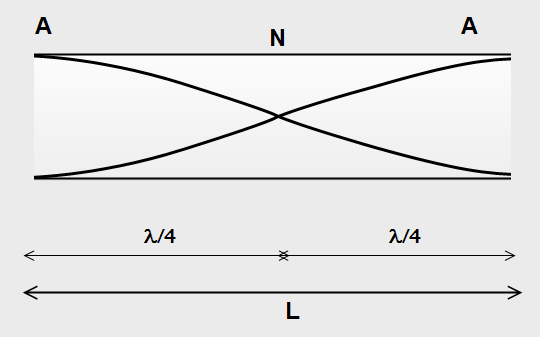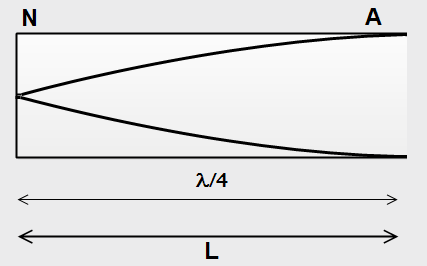Question #f8fc7
1 Answer
See below.
Explanation:
This depends on whether the pipe is closed or open-ended.
The fundamental frequency of a pipe is the simplest, smallest portion of a wave that can fit into a pipe. At the open end of a pipe, there is always an antinode - an area with maximum air movement.
If it is an open-ended pipe, there is an antinode at each end, meaning that the length of the pipe is equal to
Manipulating the formula
#f = v / (2L) -># in an open-ended pipe.

If it is a closed-ended pipe, there is an antinode at the open end and a node at the closed end - causing the sound to reflect - meaning that the length of the pipe is equal to
Again, if we manipulate the formula
#f = v / (4L) -># in a closed-ended pipe.

This website can give further explanation for you.


